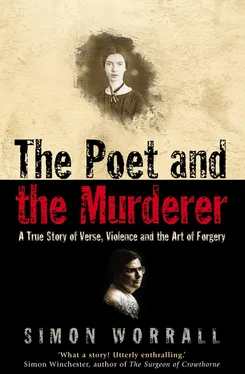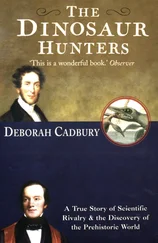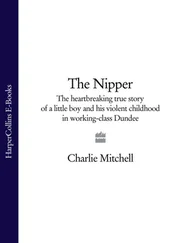Todd might have gone on to bring out a complete edition, if it had not been for a strip of land that Austin Dickinson left her at his death in 1895. Outraged by this affront to the family’s name, Lavinia Dickinson, the poet’s sister, sued Mabel Loomis Todd successfully for its return. Relations were even frostier between Susan Gilbert Dickinson, Austin’s widow, and Mabel Loomis Todd, his former mistress, both of whom possessed substantial quantities of poems and letters. The ill feeling was passed to the next generation. Between 1914 and 1945 Martha Dickinson Bianci, Sue’s daughter, and Millicent Todd Bingham, Mabel’s daughter, fought a bitter battle over Dickinson’s legacy, bringing out competing editions of the manuscript materials they had inherited from their warring mothers.
All these early editions were flawed. Poems were ordered according to the whim of the editors who took Dickinson’s jazzy, idiosyncratic rhyme schemes and highly unusual orthography and changed them to suit late-nineteenth-century tastes. The Harvard scholar Thomas Johnson eventually restored Dickinson’s unique voice and style, and established a chronology for the poems.
Johnson’s edition also plucked a shy girl from Massachusetts out of her self-chosen seclusion and turned her into the It girl of modern American poetry. ‘I like, or at least I admire, her a great deal more now,’ the poet Elizabeth Bishop wrote to Robert Lowell in 1956, ‘probably because of that good new edition, really. I spent another stretch absorbed in that, and think … that she’s about the best we have.’
But Johnson’s variorum edition was not published until almost seventy years after Dickinson’s death, and it did not resolve all the tangled editorial problems she left behind her. Johnson had only been able to consult Photostats of many of the poems, and so there were errors in the transcriptions. Other versions of the poems began to surface, and in the rapidly growing academic industry that had sprung up around Dickinson, debate raged about everything from the dating of the poems to the layout of the words on the page. A new referee was needed.
Ralph Franklin, the ambitious, quick-witted director of the Beinecke Library, whose work on Dickinson’s manuscripts went back to the late 1960s, was the person chosen for the job. The first thing he did was to go back to the original manuscript books in which Dickinson had stored her poems. Having scribbled down a draft of a poem, usually in pencil, Dickinson would set about the exacting work of revision and editing. This was done mostly at night, sitting at the table in her bedroom on the second floor of the Homestead. The process of editing and revising a poem might go on for months or even years. Only when she was completely satisfied did she write a finished copy of the poem. This time she wrote in ink, not pencil; and instead of the scraps of kitchen paper or backs of an envelope she used for drafts, she wrote the final versions of her poems on a sheet of notepaper already folded by the manufacturer to produce two leaves. She had a large collection of such papers from all over New England. Sometimes she chose a piece of laid, cream-colored paper; sometimes it was a wove white paper with a blue rule. When she had accumulated four – sometimes it was six – of these sheets, she would stack them on top of each other. She would then take a thick embroidery needle threaded with string and make two holes through the sheets, forcing the needle through the paper, from front to back. Then she threaded the string through the holes and tied it firmly at the front. A wonderful poem written in 1861, during a personal crisis that had affected her eyesight, shows how closely, for Dickinson, making poems and the act of sewing were connected:
Don’t put up my Thread & Needle –
I’ll begin to Sow
When the Birds begin to whistle –
Better stitches – so –
These were bent – my sight got crooked –
When my mind – is plain
I’ll do seams – a Queen’s endeavor
Would not blush to own –
Dickinson referred to these stitched booklets of poems in down-home Yankee fashion as ‘packets.’ It was Mabel Loomis Todd, her first editor, who, more grandly and pretentiously, referred to them as ‘fascicles,’ from the French word fascicule . In fact, there is nothing grand about them. Dickinson had probably learned to make such packets of documents at Amherst Academy, where she had gone to school. There were no ring binders in those days, so students were taught to keep their writing assignments in little homemade manuscript books. When she died, forty of these packets of poems, which constitute one of the great literary treasures of the world, were found squirreled away in her room. Hundreds more poems were found on separate, unbound sheets.
Though none of the poems was dated, and none had titles, their order in the fascicles would have given a reliable chronology. Unfortunately, when Mabel Loomis Todd set about creating her first edition – and, almost certainly, to enable her to weed out and destroy poems that would have shocked and offended Dickinson’s contemporaries – she took a pair of scissors, cut the threads Dickinson had sewn through the pages, and unbound them.
For his landmark two-volume edition of the fascicles, The Manuscript Books of Emily Dickinson , which was published in 1981, Franklin spent years reconstructing the order of the poems. Working like a forensic document examiner, he painstakingly reconstructed Dickinson’s ‘workshop.’ He studied the paper she used, the watermarks, and any manufacturing defects, like wrinkles, that might indicate the order of the sheets. He looked at discolorations on the paper to identify the first and last page of a fascicle, knowing that the inner leaves would be much cleaner. He examined stain marks, where the poet had spilled some chamomile tea while she worked, or some water as she fed the plants in her room. Sometimes these stains formed a pattern over several sheets, and by fitting them together Franklin was able to work out which page had been bound up next to which. He looked for smudge patterns in the ink, where Dickinson had inadvertently drawn the sleeve of her dress, or her hand, across the page. He examined the puncture patterns of the needle holes she had driven through the page, and signs of stress in the paper caused by the pressure of opening a fascicle against the tension of the stabbed binding. Using a microscope, he examined the curvature along the edge of each sheet, and the damage around the binding holes, clues that might reveal which order the sheets had been stacked in. But most of all he studied the poet’s handwriting.
Few people’s handwriting has changed more throughout their lifetime, and revealed more, than Emily Dickinson’s. If you compare the handwriting of her first poem, ‘Awake ye muses nine, sing me a strain divine,’ a forty-line valentine bubbling with girlish high spirits, written when she was nineteen, with poems written around the 1870s, when she was in her forties, it is hard to believe that they are written by the same person.
In 1871, the date of ‘That God Cannot Be Understood,’ Dickinson was middle-aged – she was born on December 10, 1830 – and roughly halfway along the trajectory of her handwriting’s evolution. In the course of dating Dickinson’s poems Franklin had created a series of charts showing the different letter forms and shapes the poet used at different times in her life. The first thing he did when he received the fax containing the poem from Las Vegas was to compare the letter forms with those on his charts.
Everything checked out. There were, for instance, two different forms of the letter d in the poem: one, in the word God in the first line, looked like a six turned backward. The other, in the word should , in the ninth line of the poem, was radically different. The two elements of the letter had split apart, making it look like a backward-sloping c and an l . Franklin knew that Dickinson had used the one form before this period (the early 1870s), and another form later. Exactly around the year 1871, though, she had used both forms. That’s Dickinson’s d ! he thought as he looked at the final letter of the word comprehend .
Читать дальше












